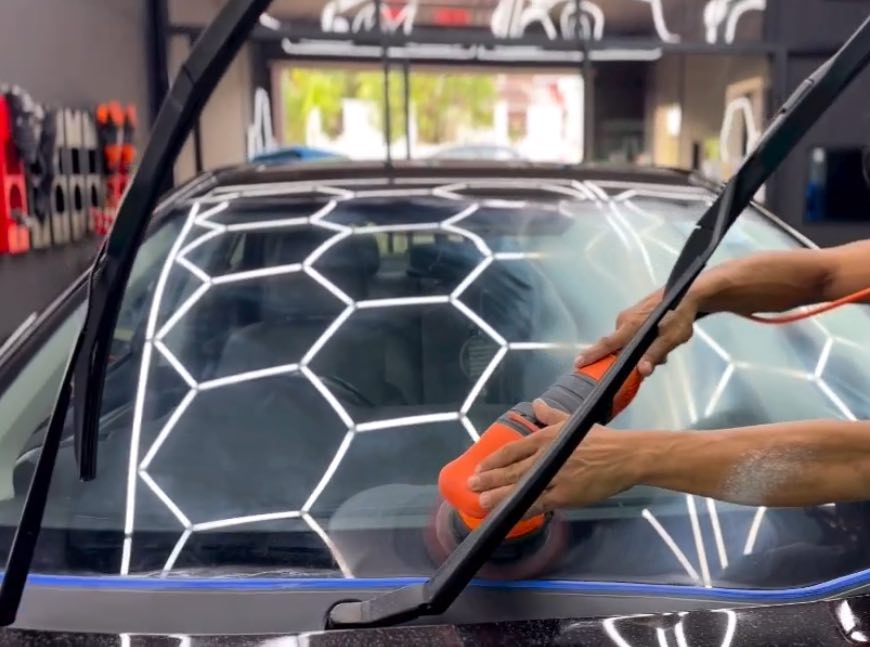Polishing a windshield is something every car owner needs to know how to do, yet it is often overlooked. Windshields are integral to any vehicle, providing visibility and protection from the elements. Unfortunately, they can get scratched and lose their shine over time, making visibility challenging. While many commercial windshield polishers are available today, knowing how to polish a windshield can save you time and money. This comprehensive guide will give you all the details required to polish your windshield properly and efficiently at home. From what supplies you need for the job to exactly how much pressure should be applied during each stage of the process, this comprehensive guide will ensure that your windshield is sparkling clean in no time!
Preparing the Windshield for Polishing
Before you begin polishing, ensure that you thoroughly clean the windshield to eliminate any dirt, dust, and debris. Start by spraying a mild glass cleaner onto the windshield and wiping it down with a soft cloth. It will help ensure that no particles are left behind that could cause scratches while polishing. After removing all apparent dirt and grime, wipe away any leftover glass cleaner residue with a moist cloth. If any stubborn spots on your windshield need extra attention, you can use a razor blade scraper or glass polisher to remove them before moving forward with the polishing process.
 Choosing the Right Polishing Compound and Equipment
Choosing the Right Polishing Compound and Equipment
Once your windshield is prepped for polishing, several options exist for choosing which compound and equipment you need. Depending on how severe your scratches are, you may need a different type of compound than if your scratches were more superficial. For light scratching or dullness, a fine rubbing compound should be used; however, for more serious damage like chips or gouges on your windshield, use a heavy-duty compound such as an electric buffer and wool pad combination or an abrasive disc attachment on your drill bit set up. In either case, make sure you read and follow all instructions provided by the manufacturer when using their products, as each product is different in terms of application technique, required time frames, etc.
Applying the Polishing Compound
Once you have chosen which type of polish best suits your needs, apply it either by hand (for mild scratching) or with power tools (for deep damage). If using power tools such as an electric buffer equipped with wool pads, move slowly across the surface in smooth overlapping strokes until all areas have been covered evenly, always applying moderate pressure. Be aware that applying too much pressure could cause further damage, so don’t go beyond what manufacturer guidelines recommend! If working manually, use circular motions while applying light pressure until desired results are achieved – again following instructions provided by manufacturer guidelines! Remember always to practice safety when using power tools!
Finishing and Inspecting the Windshield
When finished applying polish, allow enough time to settle onto the surface before inspecting overall results visually, looking out for missed spots/areas that require additional attention if necessary. Apply additional layers of polish as needed until desired results are achieved. After all the layers have dried or set, wipe the surface using a soft cloth to eliminate any remnants from the polishing procedure. Inspect your windshield after each application and cleaning session for scratches or imperfections, and check that no residue remains on the glass before moving on to the final step. If you’re a Jeep owner interested in enhancing your vehicle’s appearance, you can also read about the Best Quick Release Mirrors for Jeep to complete your upgrade checklist.
Conclusion
Polishing a windshield is an important part of vehicle maintenance. Following this detailed guide will guarantee a spotless and transparent windshield each time. Preparation is key when it comes to polishing, and choosing the right compound and equipment is essential, depending on your specific needs. Be sure to take caution when applying polish, not too much pressure or too much polish, as this could further damage your windshield. Finally, remember to inspect the results before being completely satisfied, ensuring that all areas have been addressed correctly and are free of streaks or dullness. With these tips in mind, you will have beautiful clarity again soon!


 Choosing the Right Polishing Compound and Equipment
Choosing the Right Polishing Compound and Equipment